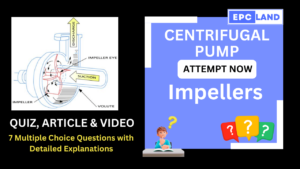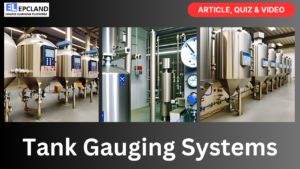Green Ammonia Plant Estimator
A Dashboard by ATUL SINGLA
BASIC REQUIREMENTS
| UNITS | NH₃ | H₂ | N₂ |
|---|---|---|---|
| kTPA | — | — | — |
| TPD | — | — | — |
| TPH | — | — | — |
| kg/hr | — | — | — |
| kg/sec | — | — | — |
| Nm³/hr | — | — | — |
POWER (in kW)
| CONSUMER | STEAM CASE | ALL ELECTRIC CASE |
|---|---|---|
| Ammonia Unit | ||
| Electric Start-up Heater | — | — |
| Syngas Compressor | — | — |
| Nitrogen Compressors | — | — |
| Ammonia Refrigerant Compressor | — | — |
| Process Pumps (Product, etc.) | — | — |
| Boiler Feedwater (BFW) Pumps | — | — |
| Total Value | — | — |
| Electrolysers | ||
| Electrolyser System | — | — |
| Total Value | — | — |
| ASU | ||
| Total Value | — | — |
| Balance of Plant – BOP | ||
| Cooling Tower Pumps | — | — |
| Cooling Tower Fans | — | — |
| Instrument Air Package | — | — |
| Water Treatment Plant (WTP) | — | — |
| Effluent Treatment Plant (ETP) | — | — |
| Firewater Jockey Pump | — | — |
| Other BOP (HVAC, Lighting, etc.) | — | — |
| BOP Sub-Total | — | — |
| BOP Margin (10%) | — | — |
| Total Value | — | — |
| PLANT GRAND TOTAL | — | — |
| (Ammonia Total + Electrolyser Total + ASU Total + BOP Total) | ||
ELECTROLYSER & STEAM ANALYSIS
| PARAMETER | VALUE |
|---|---|
| Installed Electrolyser (MW) | — |
| Required Electrolyser (MW) | — |
| Daily Op. Hours | — |
| Steam Balance (Tonnes/hr) | |
| Steam Generation Potential | — |
| Steam Consumption Demand | — |
| Steam Cycle Self-Sufficient? | — |
COOLING WATER DUTY & FLOW ANALYSIS
| PARAMETER | STEAM CASE | ALL ELECTRIC CASE |
|---|---|---|
| Peak Heat Duty (kWth) | — | — |
| Average Heat Duty (kWth) | — | — |
| Peak Circulation Rate (m³/hr) | — | — |
| Average Circulation Rate (m³/hr) | — | — |
CAPEX & OPEX OVERVIEW
| REQUIREMENT | STEAM | ALL ELECTRIC | CAPEX | OPEX |
|---|---|---|---|---|
| Waste Heat Boiler (WHB) | — | No | Yes | No |
| Steam Drum | — | No | Yes | No |
| Steam Turbine | — | No | Yes | No |
| Surface Condenser | — | No | Yes | No |
| Deaerator | — | No | Yes | No |
| BFW Pumps | — | No | Yes | No |
| Extensive Piping & Valves | — | No | Yes | No |
1. Basics of Green Ammonia
What is Conventional Ammonia?
Ammonia (NH₃) is one of the most produced inorganic chemicals globally. Traditionally, it’s manufactured using the Haber-Bosch process, which combines atmospheric nitrogen (N₂) with hydrogen (H₂). The critical part is the source of the hydrogen: it’s typically derived from natural gas (methane, CH₄) through a process called steam-methane reforming (SMR). This process is energy-intensive and releases significant amounts of carbon dioxide (CO₂), earning it labels like “grey” or “brown” ammonia.
Green Ammonia (NH₃) is ammonia produced through a process that is 100% renewable and carbon-free. The hydrogen is sourced from water electrolysis powered by renewable electricity, and the nitrogen is separated from the air, also using renewable energy.
Why is Green Ammonia Important?
- Decarbonization of Agriculture: Over 80% of ammonia is used to produce fertilizer. Green ammonia allows for the production of carbon-free fertilizers.
- Energy Storage & Carrier: Hydrogen is an excellent energy carrier but is difficult to store and transport. Ammonia is much denser and easier to liquefy, making it an ideal medium for storing and transporting renewable energy over long distances.
- Zero-Carbon Fuel: Ammonia can be burned in engines or used in fuel cells to generate power without releasing CO₂. It is a leading candidate for decarbonizing the global shipping industry.
2. Core Concepts & Processes
A Green Ammonia plant integrates three main technologies:
A. Water Electrolysis (Hydrogen Production)
This is the cornerstone of the “green” process. Electrolyzers use renewable electricity to split water (H₂O) into hydrogen (H₂) and oxygen (O₂). The oxygen is often vented or can be captured for industrial use.
- Alkaline Electrolysis (AEL): A mature, cost-effective technology.
- Proton Exchange Membrane (PEM) Electrolysis: More flexible and responsive, ideal for pairing with variable renewables like wind and solar.
- Solid Oxide Electrolysis Cell (SOEC): A high-temperature process that is more efficient but less mature.
B. Air Separation Unit (ASU) (Nitrogen Production)
The nitrogen (N₂) component of ammonia is sourced from the air we breathe (~78% nitrogen). An Air Separation Unit, typically powered by renewable electricity, isolates this nitrogen.
- Cryogenic Air Separation: The most common method for large-scale production. Air is cooled to extremely low temperatures until it liquefies, then separated by fractional distillation. It’s highly efficient at scale.
- Pressure Swing Adsorption (PSA): Used for smaller-scale applications. Air is passed through adsorbent materials that trap other gases, allowing pure nitrogen to pass through.
C. Haber-Bosch Process (Ammonia Synthesis)
This is the same chemical process used for over a century. The “green” hydrogen and “green” nitrogen are reacted under high pressure (150-250 bar) and temperature (400-500°C) over an iron-based catalyst to produce ammonia. The key difference is that the inputs are now entirely renewable.
N₂ (g) + 3H₂ (g) ⇌ 2NH₃ (g) (ΔH = -92.4 kJ/mol)
The reaction is exothermic, meaning it releases a significant amount of heat. This waste heat is a critical factor in plant design and efficiency, as it can be recovered to generate steam.
3. Key Formulas & Calculations
Stoichiometry (Mass Balance)
The foundation of any plant design is understanding the mass ratios required by the chemical reaction.
1 kg of NH₃ = 0.8224 kg of N₂ + 0.1776 kg of H₂
This means to produce 1000 tonnes of ammonia, you need 822.4 tonnes of nitrogen and 177.6 tonnes of hydrogen.
Electrolyzer Power Requirement
This is the single largest energy consumer in the plant. Its power is determined by the required hydrogen flow and the electrolyzer’s efficiency (Specific Energy Consumption).
Power (kW) = [ H₂ Required (kg/hr) * Specific Energy (kWh/kg) ]
Specific Energy (kWh/kg): A measure of electrolyzer efficiency. A lower number is better. Typical values range from 48-55 kWh per kg of H₂ produced.
ASU Power Requirement
The power needed to separate nitrogen from the air.
Power (kW) = N₂ Flow (Nm³/hr) * Specific Power Factor (kW per Nm³/hr)
Specific Power Factor: Depends on the ASU technology. Cryogenic units are more efficient (~0.3 kWh/Nm³) than PSA units (~0.45 kWh/Nm³).
4. Thumb Rules & Benchmarks
These are quick, approximate values used for early-stage feasibility studies before detailed engineering is performed.
- Total Plant Energy Consumption: A green ammonia plant typically requires 9 to 11 MWh of renewable electricity to produce one metric ton of ammonia. This is the key performance indicator (KPI).
- Electrolyzer Specific Energy: A good planning figure for modern PEM or Alkaline electrolyzers is around 50-52 kWh/kg of H₂.
- Haber-Bosch Loop Power: The synthesis loop itself (compressors, pumps, etc.) consumes roughly 0.7-1.0 MWh per ton of NH₃ in an “All-Electric” configuration.
- Balance of Plant (BOP): The power for all utilities (cooling, water treatment, controls, etc.) is often estimated as 5-10% of the total main process power (Electrolyzer + ASU + Synthesis Loop).
5. Key Assumptions
Estimators and early designs rely on several key assumptions. It’s crucial to be aware of these as they can significantly impact the final design and cost.
- Steady-State Operation: Calculations assume the plant runs continuously at its design capacity. They do not account for efficiency losses during start-up, shutdown, or part-load (turndown) operation, which is common when coupled with variable renewables.
- Fixed Efficiencies: Component efficiencies (compressors, pumps, electrolyzers) are assumed to be constant. In reality, performance can degrade over time or vary with ambient conditions.
- 100% Renewable Power: The core assumption is that the electricity source is entirely carbon-free and available when needed. In practice, this might require a combination of sources (solar, wind) and battery storage.
- Standard Conditions: All gas volumes (Nm³) are calculated at Normal Temperature and Pressure (0°C and 1 atm), which is a standard industry practice for consistent comparison.
6. Steam vs. All-Electric
A major design decision is how to power the large Syngas Compressor in the ammonia synthesis loop. This choice depends on the project’s economic drivers (CAPEX vs. OPEX).
| Feature | Integrated Steam Case | All-Electric Case |
|---|---|---|
| Syngas Compressor Drive | Driven by a Steam Turbine. | Driven by a large Electric Motor. |
| Heat Recovery | Waste heat from the exothermic reaction is captured in a Waste Heat Boiler (WHB) to generate high-pressure steam for the turbine. | The heat of reaction is treated as waste and rejected to the cooling water system. |
| Capital Expense (CAPEX) | Higher. Requires additional equipment: WHB, steam drum, turbine, condenser, deaerator, etc. | Lower. Simpler design with less equipment. |
| Operating Expense (OPEX) | Lower. Uses “free” energy from the process, reducing the need to purchase electricity from the grid. | Higher. Requires a massive amount of purchased electricity to run the motor, increasing the electricity bill. |
| Cooling Water Duty | Lower. A significant portion of the heat is used, not rejected. | Higher. The cooling system must be much larger to handle the entire heat of reaction. |


